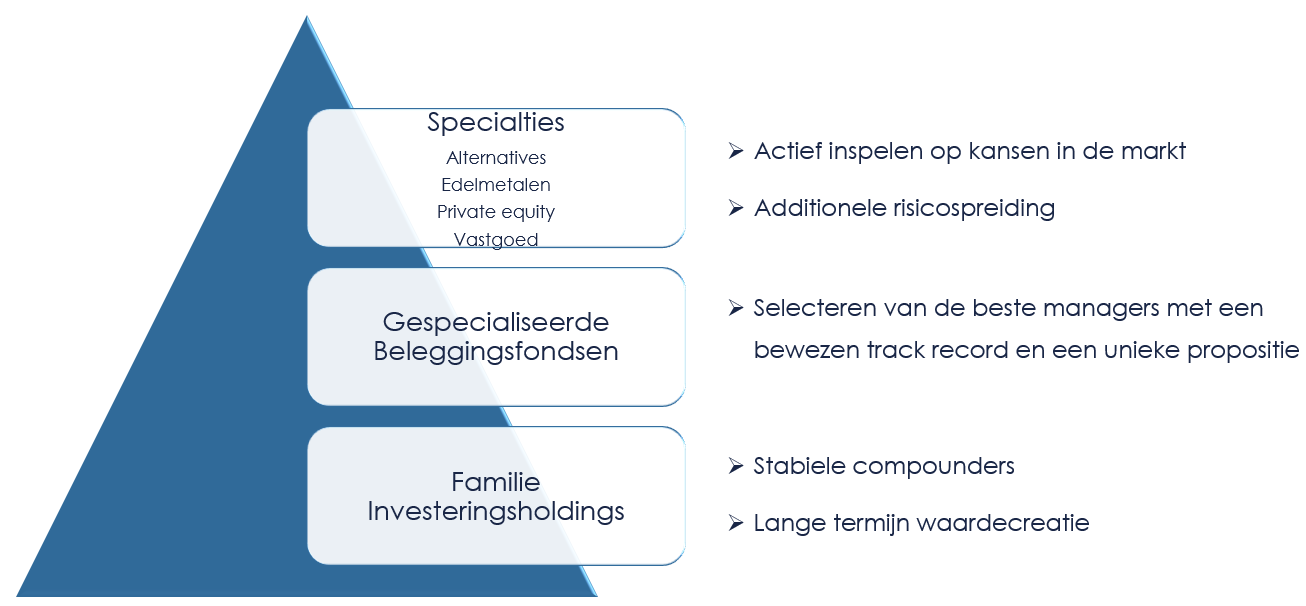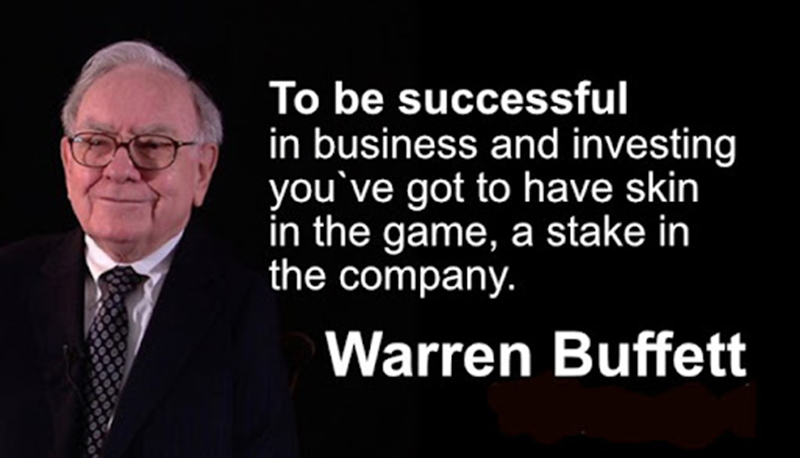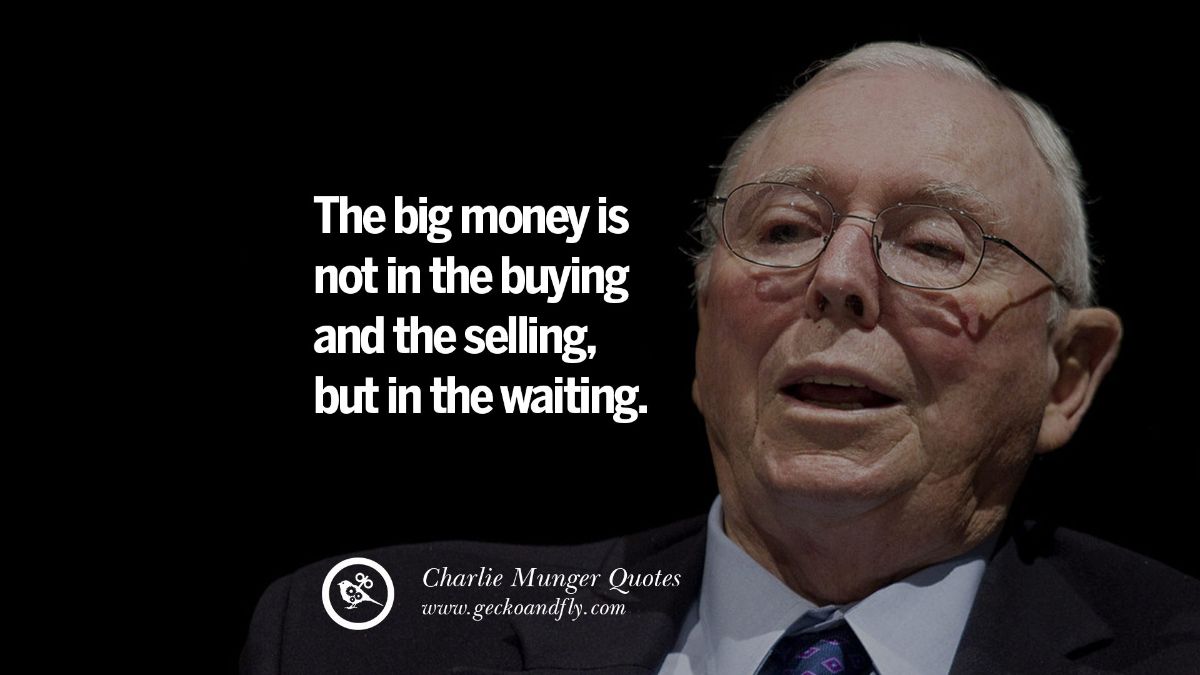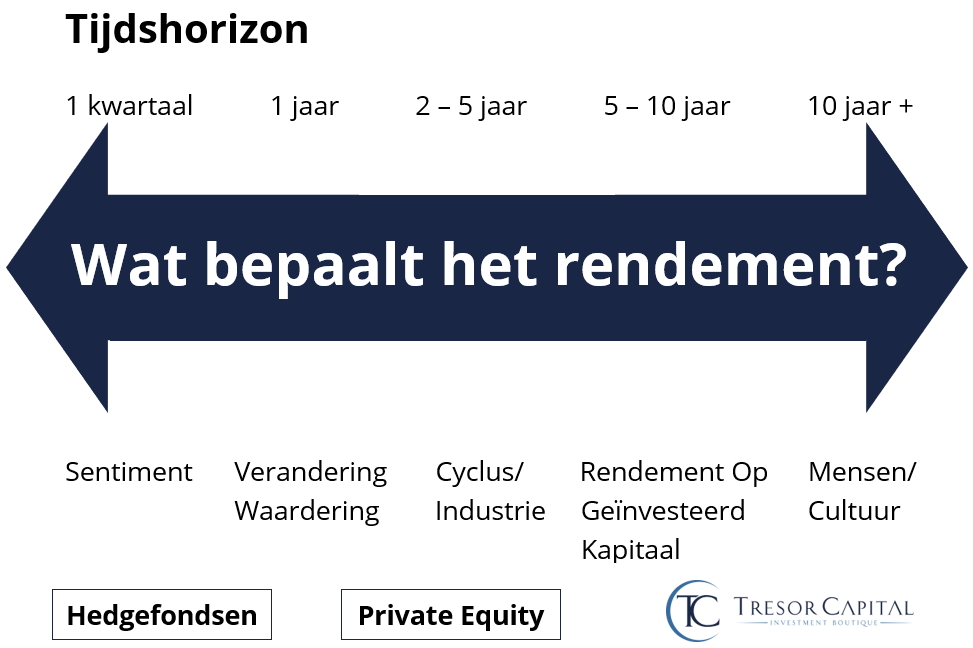Tresor Vision: looking ahead 2022
Valuation
We wrote in our outlook last year that the equity risk premium is generally a better valuation measure than ratios such as the P/E ratio. The equity risk premium is the difference between the (expected) return on equities and the interest rate. Taken literally, it is the additional return required by investors to prefer investing in stocks over “safe” bonds.
An above-average risk premium indicates that higher returns are expected, or in other words, a relatively low risk premium indicates a (too) high valuation of stocks. Last year, the risk premium on the S&P 500 index was 4.94%, higher than the average since 1961 of 4.25%. Currently, at 5.17%, the equity risk premium is even higher than the historical average, so owning stocks still offers above-average compensation.
Portfolio building blocks
For further consideration of the current stock market environment and the macroeconomic factors at play, please refer to our previous coverage. In this outlook, we consider the impact of these factors on the three building blocks that typically comprise our portfolio, as shown in the figure below. In particular, we draw attention to the factors that we believe may result in achieving our clients’ investment objectives.

Family Investment Holdings
Families as stewards of capital
One of the many advantages of investment holding companies is that you co-invest with the founding family. They are like publicly traded family offices, within which the families manage the capital like a steward . The capital should be maintained in the best possible way so that it can be passed on to the next generation. This fact, plus the fact that virtually all of the family capital is held in the holding company, means that there is a high degree of skin in the game. The interests of the family capital are thus aligned with those of the external shareholders of the investment holding company.
As a result, a family holding company typically has a very long-term investment horizon. This usually translates into them taking fewer risks, preferring to finance investments or acquisitions from profits rather than debt, and having rock-solid balance sheets. In short: family holding companies can take a beating.
Now that several companies have published the figures for the past calendar year, we get a closer look and a better understanding of the state of affairs. A major theme in the stock market, for example, is persistently high inflation. Several family holding companies have published record figures with increasing margins, meaning they can pass on inflation almost entirely to the customer.
This is not surprising, as we use strong market positions as one of our selection criteria. A strong market position means that an investment holding company or its subsidiary(ies) is a market leader with a strong competitive position, often due to a focus on niche markets. This may be due to scale, or, for example, a strong brand such as Apple.

Broad diversification and active management
Another advantage of family holding companies is the broad portfolio diversification . A family holding company usually has listed companies, unlisted (subsidiaries), private equity funds, bonds or real estate in its portfolio. A single holding company even has 80 kilograms of gold on its balance sheet. As a result, a holding company shareholder is less exposed to the performance of just one company.
Because of the broad composition of a holding company, the development of net asset value is not dependent on a single stock or fund in the portfolio. Moreover, the holding portfolio is actively managed, so the family and management are like additional layers of protection keeping an eye on the portfolio. When a stock falls, for example, because of a temporary setback, the family holding often strikes by buying in if the rosy long-term outlook is still intact. If a stock price gets too far ahead of the music, a position can actually be reduced.
Many family holding companies also offer access to unique investment propositions such as unlisted companies or private equity funds. It has often taken the families decades to build this portfolio, resulting in a network consisting of relationships with the best-performing funds and companies. As an investor, you can only get exposure to this by buying shares of the family holding company.
Ironclad balance sheet, optionality cash
In addition to the broad selection of investments, family holding companies often have a (sizable) net cash position. This provides protection in times of recessions or stock market corrections, as well as offering optionality. A family holding company can strike opportunistically when an outside opportunity arises, for example, when a competitor is in financial trouble, when an entrepreneur wants to sell his company, or when stock markets are falling.
The cash position can be used to buy back own shares. If the stock markets fail to value the family holding company and there is a substantial undervaluation, the family holding company can take advantage of this by buying its own portfolio at a discount, so to speak. That increases the net asset value per share, and our ownership as shareholders is also increased a bit. We then have to share profits with fewer owners. Many of our selection of family holding companies have recently bought back their own shares substantially, a clear signal that they believe they are undervalued.

Finally, well-capitalized companies such as family holding companies can benefit from rising interest rates. They typically have little (short-term) debt, but then receive more interest income on cash positions and short-term bonds. Thus, the earnings of well-capitalized companies are thus increased, while debt-laden companies have water up to their lips (which in turn can mean acquisition opportunities for the former group of companies).
Selection criteria Tresor Capital
As Tresor Capital, we apply additional selection criteria, on top of active family management. For example, we regularly review the composition of the family holding company portfolio. This includes a focus on the degree of exposure to megatrends such as digitalization, automation, the energy transition, aging and health, the emerging Asian middle class and the rise of alternative investments. Other criteria include track record and competitive position. We should also, of course, be enamored with the assets in the holding company’s portfolio.
Furthermore, we closely monitor the valuation of the stock price relative to the net asset value, both between portfolio holdings and relative to the holding company’s own history. In this way, we ensure that there is an optimal risk-return ratio at all times, allowing the client to achieve his or her investment goals.
Specialized Investment Funds
In addition to direct equity investments in family investment holding companies, the second building block consists of specialized (equity) investment funds. These are fund managers that have demonstrated excellent returns over a long period of time by applying a distinctive strategy, thus beating their benchmark over longer periods of time.
What is important here is that they themselves have a good idea of the (under)valuation of their companies, that they are transparent in communicating the strategy and report regularly. Fund managers should be able to clearly indicate the impact of issues such as inflation, interest rate increases, geopolitical or macroeconomic events on the companies in their portfolio. Moreover, it is important that fund managers themselves maintain close contact with the companies they invest in, preferably by visiting management teams, plant locations and, for example, competitors.
Distinctive fund managers
As with family holding companies, skin in the game is one of the most important selection criteria for us. The fund managers themselves should also invest the majority of their assets in their own mutual fund, in order to identify their interests with those of their investors. This also motivates the fund manager to stay on as manager of the fund for a long time and offers investors some certainty about the continuity of the current strategy.
The longer the investment horizon, the more important people and culture are to returns, as shown in the figure below. In the short term, returns are determined by stock market sentiment. In the medium term, changes in valuation or the economic cycle determine returns. Measures that are crucial to Tresor Capital are the return on invested capital and the people and culture.

Selection criteria Tresor Capital
In addition to the above, the focus is on high-yielding funds that are also complementary to the selection of family holdings. For example, to increase exposure to one of the megatrends mentioned earlier, it may be decided to include a mutual fund. At all times, the fund should invest in high-quality companies that are attractively valued.
In turn, we are in close contact with the fund managers of our selection of specialized mutual funds. They anticipate that their portfolios are well positioned to withstand current market conditions. The fund managers continue to see attractive undervaluation relative to intrinsic value. That bodes well for the remainder of 2022 and beyond.
Specialties
With our three building blocks we as Tresor Capital have a unique offering, the bulk of our positions will not be among the possibilities at average banks or asset managers. The specialties complete our portfolio, further differentiating us as an investment boutique. One way we do this is by offering our clients access to investment propositions not normally accessible, such as private equity investments where the minimum commitment is typically USD 1 million or more.
Such propositions again pay attention to the selection criteria cited earlier. For example, they should fit within the megatrends we have identified. In 2020, we offered relationships the opportunity to participate in a venture capital fund with a focus on India and Southeast Asia, gaining exposure to the megatrends of the emerging Asian middle class and digitalization. This fund has already been able to produce very nice results. The fund managers have been preparing the second fund for months, for which several commitments have already been made. Subscriptions are expected to open in the second quarter.
We can benefit from the network that the managers of these venture capital funds have built up in recent years. Thus, through these funds we are at the table with parties we normally only have access to indirectly (for example, through one of the family holding companies). Private equity funds offer the opportunity to achieve similar or higher returns as with listed shares, without the daily price fluctuations.
With (cash) alternatives we offer our clients an opportunity to achieve a nice return with a relatively low risk, independent of stock market movements. In the event of sharp price fluctuations, these alternatives are often a stable factor in the portfolio, further optimizing the risk/return ratio of the total portfolio. By means of a modest allocation to precious metals and commodities, we also hedge the risk of inflation and macro-economic or geopolitical shocks at various relationships.

Conclusion
As you have read in the foregoing, our portfolios prepare us well for the opportunities and challenges that 2022 will bring. We do not have a crystal ball and cannot predict what will happen in the short term. On a five- to 10-year time frame, a company’s stock price follows its return on invested capital. For a period longer than ten years, the organizational culture and the people (entrepreneurial families) within the company are the decisive factor. We are convinced that we create a high quality portfolio for our clients, which enables us to achieve the agreed investment goal.